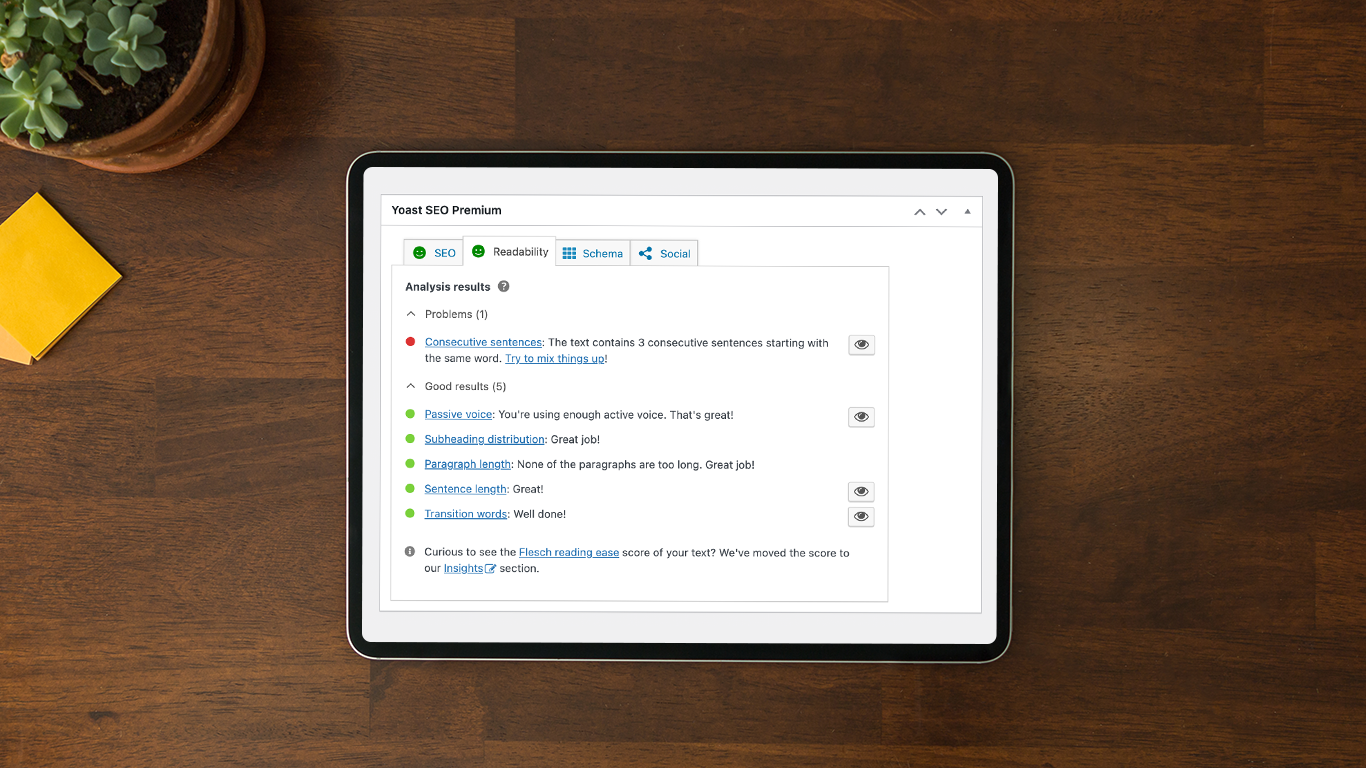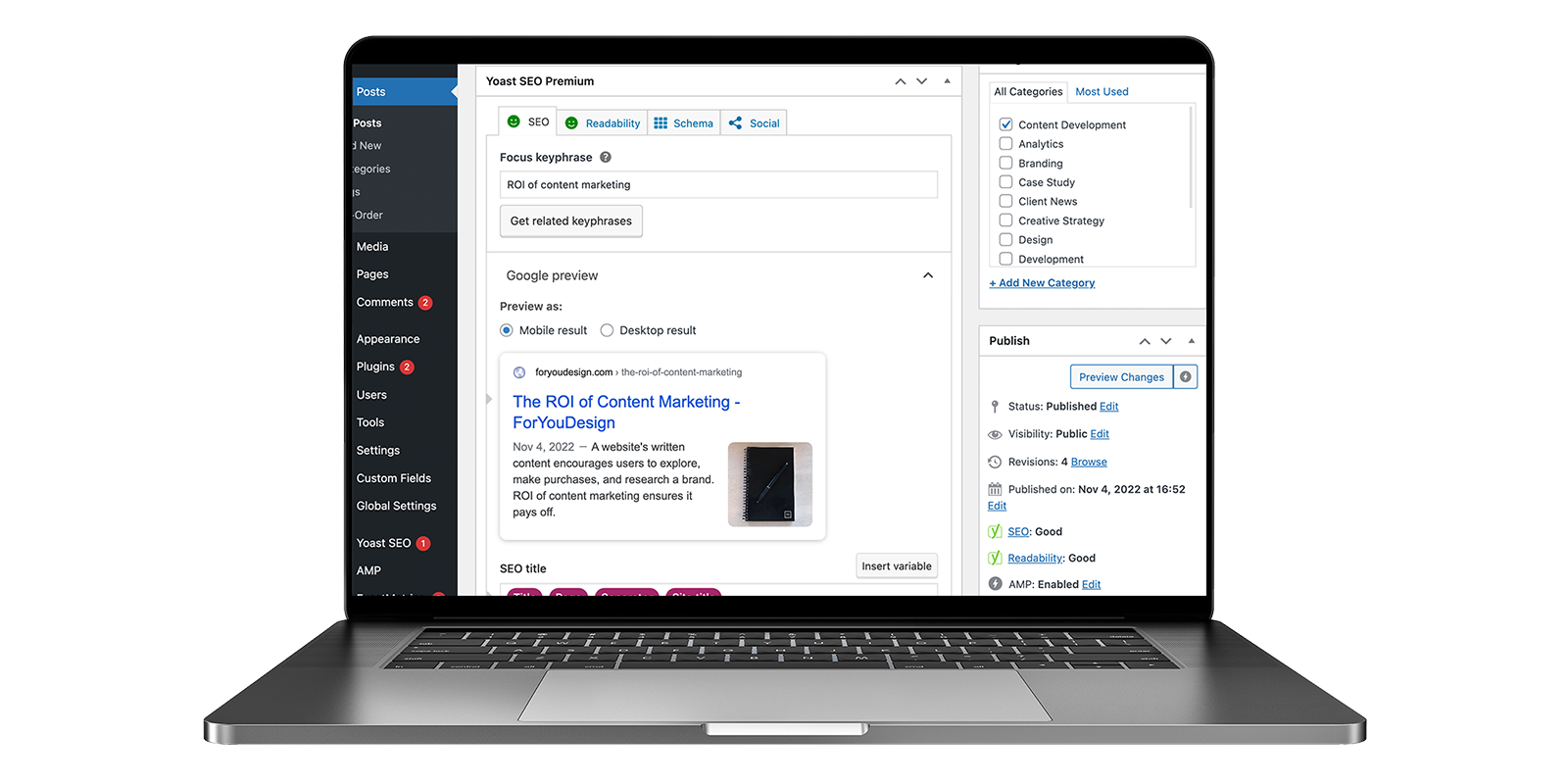Have you ever gone on Google looking for a straightforward answer, only to be directed to a page filled with complicated vocabulary, academic vernacular, and long paragraphs of tiny text? Imagine opening this blog and the first sentence being, “This blog was written with alacrity to make you cognizant of the preponderance of a readability score.”
Yeah, you would probably get off this page pretty quickly.
When searching online and visiting sites, users are looking for clear copy in a pleasing format. They are looking for content that has a good, easy readability score. But what exactly is a readability score, and how much does it matter?
What Makes Content Readable?
The readability score itself is determined based on comparisons of the number of words to the number of sentences, and the number of syllables to the number of words. As a rule of thumb, the shorter your sentences and the simpler your words, the better your readability score will be. You should aim to keep sentences around 10-15 words and default to less complex synonyms of words.
In addition, the structure and style of content also contribute to the readability score. Some elements include:
- Spacing. Utilize headers and subheaders to group similar content together. This makes it easier for readers to identify content that is relevant to them.
- Transition words. Include words that bridge the flow of your content. Yoast provides guidance to help you find and select recognizable transition words.
- Images. Images have the ability to separate text, add interest, and support ideas from your content.
- Voice. The use of active voice boosts the readability score while passive voice tends to utilize more words and a more complex sentence structure.
What’s the Big Deal with Big Words?
It may seem minuscule to swap out words and shorten sentences. However, these changes can make a big difference for your site, as readability contributes to user experience and bolsters SEO.
Easy to Read, Easy to Use
With the endless supply of information online, users are going to engage with content that is clear and uncomplicated to read. Content muddled with industry jargon and complex sentence structures will send readers off to other resources. This is not to say you cannot explore complex content in your writing. Instead, approach complexity with your readers in mind. Provide explanations and definitions as you believe they would be needed and hyperlink additional resources for those readers looking to explore further.
Additionally, simple content leads to easier site usability and increased audience. Specifically, a concise content approach has been shown to support a 124% improvement in site usability1. When you err on the side of simplicity, your content will reach more people.
SEO & Readability Score: Finding What’s Readable
A well-written website also reaches a greater audience thanks to SEO rankings. Google is smart and it now knows when developers are stuffing keywords on their pages or publishing poor writing. A good readability score leads to a good report from Google’s crawlers. Similarly, visitor analytics on sites with good readability can benefit SEO. When a site is easy to read and users spend ample time absorbing content, there will be low bounce and exit rates. Coupled with increased time spent on a site and solid conversion rates, Google will begin to take note that the site has high-quality content. The bottom line is, good content means a good SEO ranking.
Reviewing Readability Score
Even with these writing tips in mind, it is still helpful to quantitatively check your readability score. Tools such as Grammarly and Yoast SEO provide tips and suggestions to guide your writing for optimized readability. Yoast also provides a Flesch reading ease score that determines how easy your content is to read and gives benchmarks on who would best be able to understand your writing. With these valuations and suggestions, you can publish the best quality content for the masses.
The Last Word
Above all, your content should be written with purpose and with your audience in mind. Clear, quality content will make a difference in the effectiveness of your writing and website. If you’re looking for help in creating seamless copy with a solid readability score, our team at FYD is ready to get writing. Contact us to talk content.
References
1 Harris, T. (2020, December 16). The importance of readability for your site content. All Response Media. https://www.allresponsemedia.com/readability-site-content/




